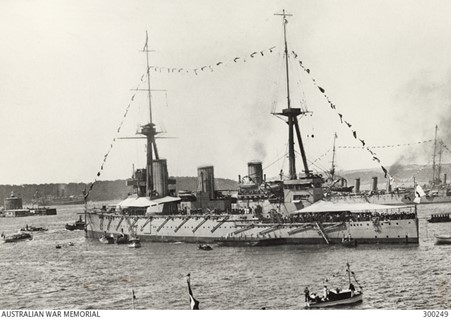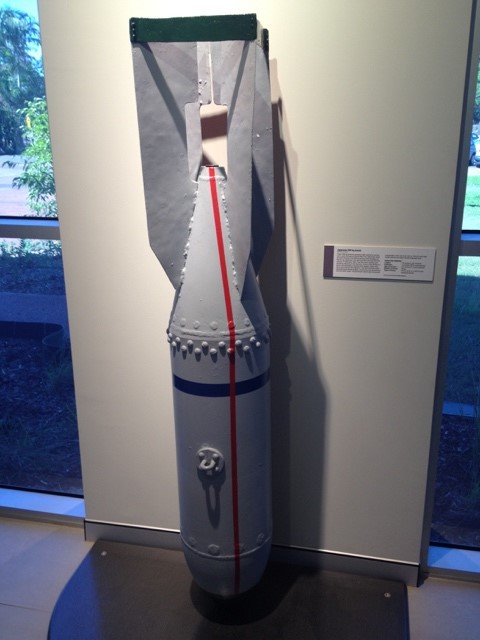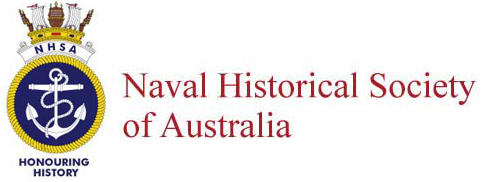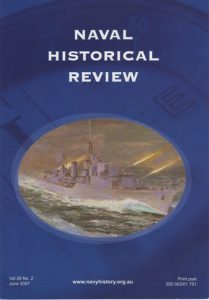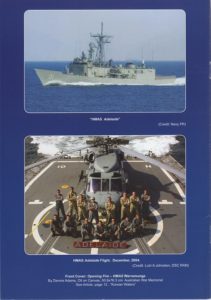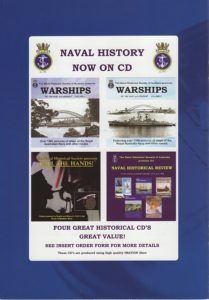By Dr John Carroll PhD
This story by Dr Carroll was first published by the Naval Association of Australia in the White Ensign Magazine in the Red Watch Issue 25/1, June 2025. It is reproduced with the kind permission of the Naval Association of Australia.
Ralph Frank Marston Lowe (1907-1992), was born at Clifton Hill, Victoria, on 30 August 1907, the son of Charles Robert and Minnie Young Lowe (nee Wade). His father was a Manager at the State Savings Bank of Victoria, which probably influenced Ralph in his choice of a future career. On 1 July 1925, Ralph was accepted into the Royal Australian Navy as a Direct Entry Paymaster Cadet, starting his naval career with six months of basic training at HMAS Cerberus, focusing on and becoming familiar with the duties and responsibilities of a Paymaster. On 1 February 1926, Lowe was appointed to the Town class light cruiser, HMAS Brisbane. On 1 July 1926, he was promoted to Paymaster Midshipman. On 10 November 1926, Lowe was appointed to Brisbane’s sister ship, HMAS Melbourne, and on 15 December 1927, he was appointed to the last of the three RAN Town class ships, HMAS Sydney.
On 8 May 1928, Lowe was appointed to the County class heavy cruiser, HMAS Canberra, and was among those sent to England to commission her. On 1 July 1928, he was promoted to Paymaster Sub-Lieutenant. Lowe spent some time in Canberra, but then on 20 October 1929, he was transferred to her sister ship, HMAS Australia, to an appointment in the Admiral’s office. Rear Admiral Edward R G Evans, CB, DSO, RN, was then Rear Admiral Commanding HM Australian Squadron. On 1 March 1930, Lowe was promoted to Paymaster Lieutenant. He continued to serve in Australia for the next two years until he was ‘Loaned’ to the Royal Navy ‘for service and training’.
On 31 January 1933, Lowe reported to London Depot at Australia House, London. From there he was appointed to the Carlisle class light cruiser, HMS Carlisle, then serving as a unit of the 2nd Cruiser Squadron, Atlantic (Home Fleet). On 30 September 1933, he was appointed to the Gadfly class gunboat, HMS Afrikander II. On 27 September 1934, Lowe was appointed to the County class heavy cruiser, HMS Dorsetshire, and two months later, on 19 November 1934, he was re-appointed to Afrikander. On 27 September 1935, Lowe’s appointment on ‘Loan’ to the RN was terminated. Following these experiences, on 11 November 1935, he was appointed to the Admiral’s office in HMAS Canberra. Rear Admiral Wilbraham T R Ford, RN, was then Rear Admiral Commanding HM Australian Squadron.
On 19 April 1936, Lowe was appointed to HMAS Penguin, and from 11 June 1936, to 11 April 1939 he acted as Naval Secretary to the General Manager, Garden Island. On 1 March 1938, Lowe was promoted to Paymaster Lieutenant Commander. On 12 April 1939, he was appointed to HMAS Cerberus (additional), for duty at Navy Office, Melbourne. During his time at Navy Office, Lowe acted as Secretary to Commodore 2nd Class Maitland Walter S Boucher, DSO, RN, Second Naval Member, Australian Commonwealth Naval Board (ACNB) (3 October 1939 to 4 December 1940), and Commodore 2nd Class, John Walter Durnford, RN, Second Naval Member, ACNB (6 December 1940 to 10 April 1941). On 11 April 1941, Lowe was appointed to the Leander class light cruiser, HMAS Perth. Travelling by service transport, Lowe joined Perth alongside in Alexandria, on 5 May 1941, just in time for the ship’s participation in the landing and evacuation of British, New Zealand and Australian troops from the island of Crete.
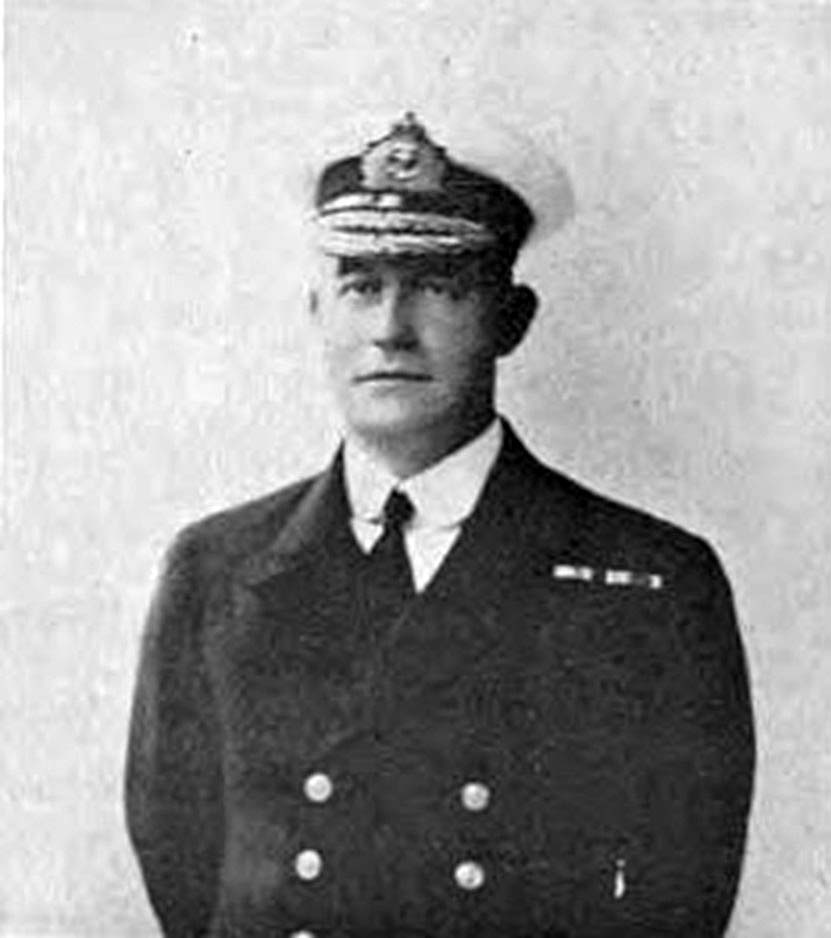
It was during these evacuations that Perth came to anchor in Sphakia Bay at midnight on 30 May, in company with the light cruiser, HMS Phoebe and the Landing Ship HMS Glengyle. Perth then embarked almost 1,200 military personnel, including 20 stretcher cases and 120 walking wounded. The small convoy sailed at 03:20, and departed the area at their best speed. At daylight on the 30th, the destroyers HMAS Stuart, HMS Jaguar and HMS Defender joined as escorts. This small convoy was attacked five times by enemy aircraft during the day, with Perth sustaining damage from a 1,000 lb bomb which exploded in A’ Boiler Room. As a result of this hit, and several near misses, four members of Perth’s ship’s company, seven soldiers and two Royal Marines were killed, and the ship was damaged considerably.
In a Memorandum for: The Secretary, Department of Defence Co-ordination, the following War Cabinet decision of 19 June 1941, was promulgated for further action.
At a meeting of the War Cabinet today it was approved that HMIS Hobart should be placed at the disposal of the United Kingdom Government forthwith, in lieu of ILMAS Perth which ship has been damaged by bomb, provided the repairs to be affected to IBMS Perth are within the capabilities of Australian dockyards.
It is, therefore, requested that the following cablegram be sent to the Secretary of State for Dominion Affairs from the Prime Minister:
In view of the damage sustained by HMAS Perth in operations at Crete, Commonwealth Government propose that ship should return to Australia for repair, provided necessary work is within the capabilities of Australian dockyard. Subject to this proviso Commonwealth Government places HMAS Hobart at your disposal forthwith in lieu of HMAS Perth.’
On 2 June 1941, Perth was taken in hand for urgent repairs at Alexandria. Following these temporary repairs, on 25 June, Perth made passage to join support operations with other Fleet units off the Syrian coast. On 7 July, Perth bombarded Vichy French shore batteries at Abney, Damour, then returned to Alexandria. While at Alexandria, Perth was nominated for return to Australia. On 18 July, Perth sailed from Alexandria and made passage to Sydney for more permanent repairs and a long overdue refit. On 12 August, Perth rejoined the RAN and was immediately taken in hand for repairs and refit at Cockatoo Island Dockyard, Sydney. For the rest of August through to 22 November 1941, Perth was under dockyard control.
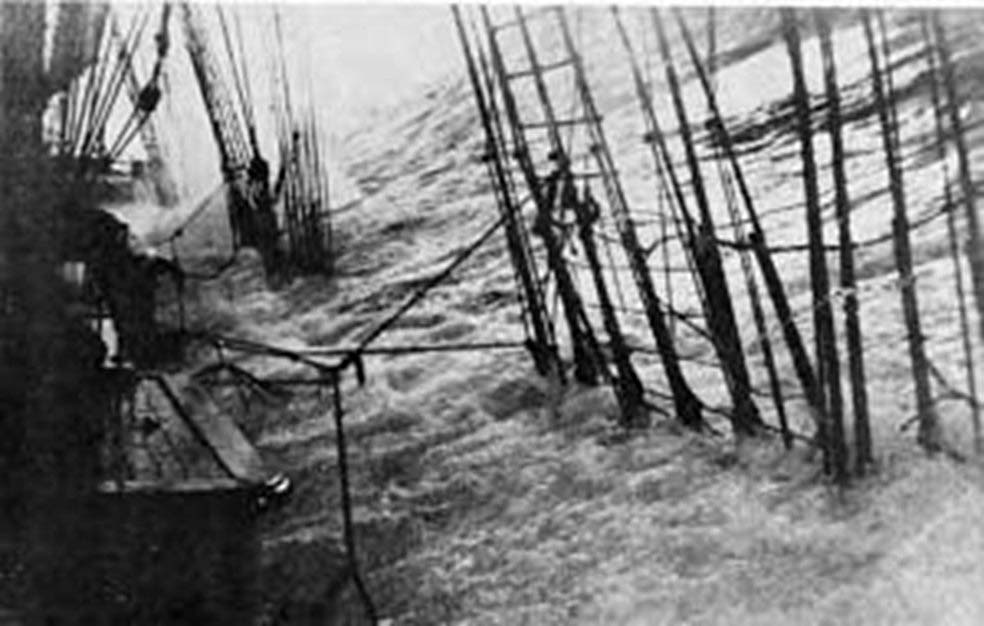
During the refit period, Captain Sir P W Bowyer-Smyth Bt., RN, relinquished command to Commander C R Reid, RAN, and on 24 September, Perth was undocked from Sutherland Dock then cold-moved by tugs and berthed alongside Cruiser Wharf, Garden Island. During her continuing refit at Garden Island, Perth suffered a fire in the bridge and the adjacent superstructure, which caused considerable damage to important electrical wiring and its associated instrumentation. In the interim, on 24 October, Captain H M L Waller, DSO* RAN, assumed command of the ship.
While still alongside, Perth embarked her full complement of torpedos, ammunition and depth charges, and from 17 to 22 November, the ship’s company embarked a full array of naval and victualling stores. On 23 November, Perth completed degaussing and compass swing trials as she prepared to rejoin the fleet. After completion of her refit, Perth operated off the east coast of Australia on patrol and escort duties, visiting New Caledonia and New Guinea. On 14 February 1942, Perth cast off from Fremantle and made passage for what was then known as the Netherland (Dutch) East Indies, arriving at the port of Batavia (Jakarta) at 10:00 on the 24th. Here she was able to replenish from the RFA tanker War Sirdar. At 15:00 the next day, Perth sailed for Surabaya in company with the heavy cruiser HMS Exeter, and HM destroyers Electra, Encounter and Jupiter, joining with Dutch Rear-Admiral Doorman’s Eastern Striking Force on the 26th.
At the time, the Eastern Striking Force consisted of the Dutch light cruisers HrMs De Ruyter and HrMs Java, the Dutch destroyers HrMs Witte de With and HrMs Kortenaer, and the USN destroyers USS John D Edwards, USS Parrott and USS Pillsbury. The force had been reinforced on 24 February by the USN heavy cruiser USS Houston and the USN destroyers USS Paul Jones, USS Alden, USS John D Ford and USS Pope, which had joined from Tjilatjap on Java’s south coast. From this time forward, the Eastern Striking Force would be known as the Combined Striking Force.
Departure from Surabaya
At 18:30 on 26 February, the Combined Striking Force from Surabaya to make a sweep to the east along the coast of Madura as far as far as the Sapoedi Strait. If the Japanese were not sighted they were to sweep west and search the Bight’ of Toeban. The Allied force sailed through the western channel towards the Java Sea in line ahead. This initial scouting operation produced negative results, but as the Force was preparing to enter Surabaya to refuel, Doorman received advice that the Japanese forces had been sighted to the north. As a consequence, he had his force reverse course and steam to intercept.
In the ensuing Battle of the Java Sea, fought during the evening of 27/28 February, the Allied force was soundly beaten by a far superior Japanese force, which was able to exert its dominance over the four-nation Allied force in the vital areas of long-range gunnery, torpedoes, night fighting, the freshness of their crews, and uniformity, especially in the vital areas of signals and communication. The two Dutch cruisers were sunk and Exeter was badly damaged, while most of the destroyers were either sunk, or withdrew once they had expended their torpedoes. Both Perth and Houston were able to break off the action and head for Tanjong Priok to refuel.

Orders were received for the two cruisers to sail through the Sunda Strait and head for Tjilatjap on Java’s south coast. They sailed at 19:00 on 28 February, and set a course westward for the Strait, Perth leading, with Houston five cables astern. At 23:06 a ship was sighted at about five miles distant, close to Saint Nicholas Point. When challenged by Perth’s signal lamp, she was identified by her actions as a Japanese destroyer, and was immediately engaged. Perth and Houston had inadvertently stumbled onto an enemy invasion force assigned to Western Java.
A short time later, several other destroyers were sighted to the north, so Perth’s main armament shifted to local/ divided control to enable more than one target to be engaged. However, despite this, the Japanese destroyers attacked from all directions, and it was impossible to engage all enemy targets at the same time; and some of these were able to attack from a much closer distance. Even so, Perth suffered only superficial damage during this phase of the action. But, just on midnight, Waller was informed that his ship had expended nearly all of her six and four-inch ammunition. Acting on this advice he decided to order full speed, and by turning his ship southwards towards Toppers Island, Waller attempted to force a passage through Sunda Strait. Perth had barely steadied on its new course when a torpedo exploded on her starboard side. As preordained, Waller ordered his crew to prepare to abandon ship. When a second torpedo struck a few minutes later, Waller gave the order to abandon ship. A short while later a third torpedo hit well aft on the starboard side, followed by a fourth on the port. The cruiser, which had been heeling to starboard, righted itself, then heeled to port and sank at approximately 00:25 on 1 March, 1942.
Those of Perth’s ship’s company who were able to do so abandoned ship between the second and third torpedos striking the ship’s hull. It is doubtful if any of Perth’s boats were launched, although many rafts and Carley floats were. During the abandon ship procedure, Perth was still under fire from several destroyers at close range; many hits were sustained and casualties caused. Many in the water were either killed or wounded by the explosions of the last two torpedos, and by shells exploding in the water. Of the 681 personnel serving in Perth, 353, including Waller, did not survive the sinking. Four later died, having managed to reach shore on Java, while a further 106 died while prisoners of the Japanese. Only 218 survived these ordeals to finally be repatriated to Australia, some three and a half years later.
Paymaster Lieutenant-Commander Ralph F M Lowe was involved in several significant battles while serving in HMAS Perth. One of the most notable was the Battle of the Java Sea on 27-28 February 1942. This battle was part of a larger effort to stop the Japanese from invading Java. Although the Allied forces were ultimately defeated, Perth managed to survive and would continue to engage the Japanese forces. Another critical engagement was the Battle of Sunda Strait on the evening of 28 February/1 March 1942. It was during this battle that Perth, along with the USN heavy cruiser USS Houston, faced a major Imperial Japanese Navy task force. But despite their valiant efforts, both Allied ships were sunk. This battle was particularly fierce and resulted in many casualties, as noted above.
A Paymaster in the Royal Australian Navy during World War 2 had several important duties to perform. Their duties and responsibilities included:
1.Financial Management: Handling all cash transactions, including payroll, and ensuring accurate financial records
- Supply and Equipment: Managing the ship’s supplies and equipment, ensuring there were adequate stocks onboard and properly accounting for everything ordered, consumed, and expended.
- Correspondence and Confidential Books: Managing the ship’s correspondence and confidential books, including coding and encoding secret signals.
4.Intelligence: Acting as the ship’s intelligence officer, if and when required.
5.Divisional Officer: Overseeing the cooks, stewards, writers, naval stores, and naval victualling sailors serving in the ship.
Paymasters of the day played a crucial role in maintaining the operational efficiency and morale of the ship’s company. During World War 2, the action station of the Paymaster on a Royal Australian Navy vessel was typically the Pay Office or Cash Office. This was where they would manage and safeguard the ship’s funds, handle payroll, and ensure all financial transactions were accurately recorded. In the event of an attack by hostile forces, the Paymaster would be responsible for securing the funds and any important financial documents.
Following the sinking of HMAS Perth in the Battle of Sunda Strait, Lowe was captured by Japanese forces and spent the rest of the war in captivity. He was to endure the harsh conditions of the POW camp at Bandung, Java, before being sent to Changi Prison in Singapore. It was from Changi, in October 1942, that Lowe and other survivors from Perth were transported to Burma to work on the Burma-Thailand Railway.
Lowe was a great believer in cohesion, and to this end he took a leadership role in coping with the challenges of being a prisoner of war through a combination of resilience, leadership, and camaraderie. This included:
1.Mental Resilience: Lowe maintained a very strong mental attitude despite the harsh conditions. Focusing on the hope of eventual release and reunion with loved ones helped him endure the daily hardships.
- Leadership: Lowe’s leadership qualities played a significant role. He provided support and guidance to his fellow POWs, which helped to maintain their morale and solidarity. This sense of community and purpose was vital for their mental well-being.
- Camaraderie: Lowe believed that building strong bonds with fellow prisoners was crucial. The sense of camaraderie and mutual support helped them to cope with the emotional strain and provided a network of encouragement.
- Staying Active: Whenever possible, Lowe and the other POWs engaged in activities that kept their minds and bodies active. This included makeshift educational classes, clandestine resistance efforts, and even creating improvised tools to improve their living conditions.
These aspects of resilience, leadership, camaraderie, and staying mentally and physically active were key to Lowe’s ability to cope with the prolonged and challenging experience of being a POW, which helped others to adopt the same or similar attitudes.
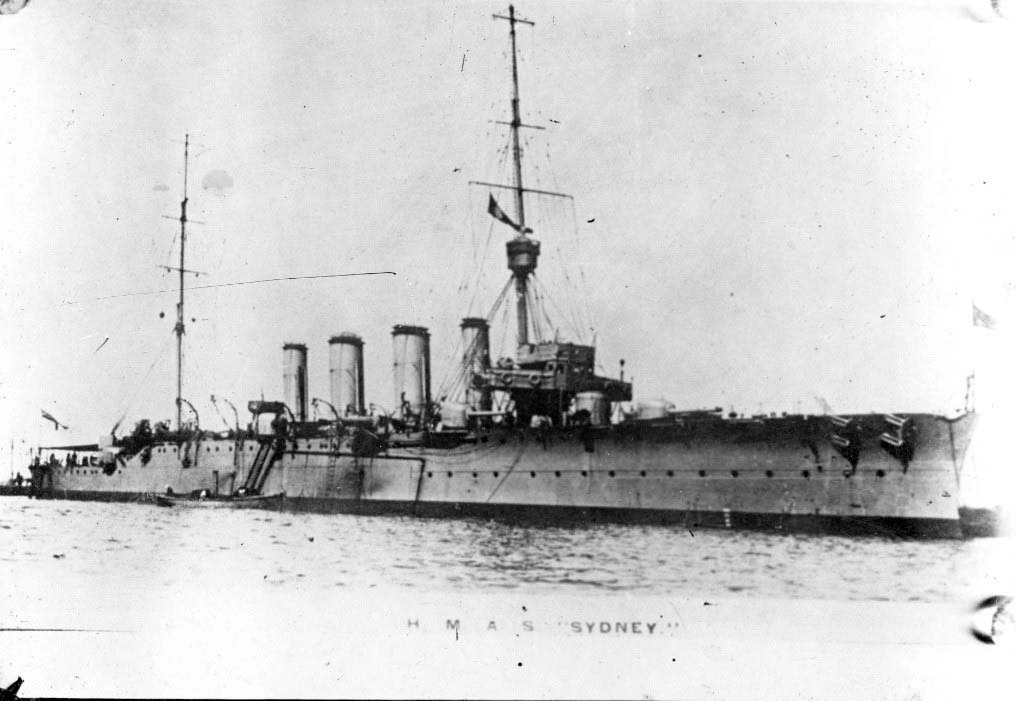
The Secret Cache of Paymaster Lieutenant-Commander R F M Lowe, RAN.
Meanwhile, a story not often told is the one about a caring Tay-Bob’ running the shipboard agency of the Commonwealth Savings Bank in HMAS Perth. And, what a boon that agency was on payday to the ‘matelot; torn between thrift and tombola. During World War 2, one of the great problems facing the Commonwealth Bank was the ability to obtain the returns from shipboard agencies so that the depositors’ records could be brought up-to-date. But with security and unexpected movements, Bank returns were, more often than not, late. But none were so late as those returned by Paymaster Lieutenant-Commander Lowe of HMAS Perth, some three and a half years after the last banking transaction had taken place in the ship. It was indeed fortunate that he was able to hand them in at all.
On 28 February 1942, after a gallant running battle with superior Japanese forces, Perth’s heroic ending was played out in the waters of the Sunda Strait. As the ship was sinking, Lowe placed the records of all the Savings Bank deposits made in Perth into a cannister which, in theory, is floated free on such occasions. According to Lowe: ‘The idea was that the cannister would be recovered by some friendly person; but I’m afraid that at 12:30 on the early morning of the 1st of March 1942, there would not have been too many friendly persons in the vicinity: Unfortunately, the cannister was never recovered. However, Lowe carried a copy of these records in a waterproof pocket of his ‘Mae West; and it is with these records that this story is mainly concerned.
1n Early in April 1942, while incarcerated in a prison camp in Batavia, Lowe met another Australian prisoner who was a member of the Commonwealth Bank’s staff in peacetime. This prisoner, realising the value of the records to the Bank, prepared another copy for himself, and one for Lowe’s assistant. These forms were duly verified and signed in the accepted bank manner, and from there on these forms met with varied fates. The bank officer mentioned above carried his copies from Java to Singapore, onto Moulmein in Burma, and from there right along the notorious Burma Railway to Kanburi Base in Siam. So, three years later, the bank officer still had the now tattered copies of the bank records, which he had carefully saved from the prying eyes of the Japanese.
By this time in mid-1945, the Japanese, seeing that their part in the war was probably lost, performed some mischievous misdeeds of childish proportions. An order was issued that any of their prisoners who had any records hidden away, should hand them in for safe keeping. The Japanese gave an undertaking that they would look after these documents. Look after them they did! The bank officer discussed this immediate problem with Lowe, as Lowe had buried the original bank documents at the last camp, and did not know if he could ever recover them. As his assistant had already been forced to destroy his copies because of Japanese searches, it was decided to hand over the third set to the Japanese for preservation. When the documents were handed over the Japanese officer promptly tore them up and dismissed the bank officer with a few sharp slaps to the face. It appeared at that time as if the episode of the bank records had come to an end.
Some few months later in Melbourne, following his recent release from captivity, Lowe was ushered into the Agency Department of the Commonwealth Savings Bank, and to the surprise of the bank official at the front desk announced that: ‘I was Paymaster in HMAS Perth and I have here statements of the business transactions for the three weeks after we left Fremantle where I had posted my last returns, until the time of the sinking of the ship.’ After being released from the Japanese POW camp, Lowe had made his way back to the Burma railroad and had managed to recover the buried bank statements. As a result of his thoughtfulness (and his resourcefulness in burying these documents in the first place), the sailors who survived, and the dependants of those who were lost, were able to receive the money that had been paid in to their savings accounts while serving in the ill-fated HMAS Perth.
Upon his arrival back in Australia, Lowe was appointed to the shore establishment, HMAS Lonsdale. On 31 December 1945, he was promoted Commander (S). Gone was the quaint title of Paymaster. Instead, officers in this category/ branch were now to be known as Supply and Secretariat (S), instead of Paymaster.
At page 1440 of the Supplement to the London Gazette of 19 March 1946, Tor gallantry and resolution while serving in HMAS Perth, lost by enemy action in the Far East on 1st of March 1942: Lieutenant Commander (S) Ralph Frank Marston Lowe, Royal Australian Navy, was awarded the Distinguished Service Cross.’

On 19 September 1946, Lowe was appointed to the County class heavy cruiser, HMAS Shropshire, as Commander (S), and was also designated as Squadron Supply Officer.
On 29 March 1947, Lowe was appointed to the County class heavy cruiser, HMAS Australia, as Commander (S), and was also designated as Squadron Supply Officer.
In July 1948, Lowe was appointed to the shore establishment, HMAS Lonsdale for a period of extended leave. On 5 August 1949, he was appointed to HMAS Cerberus, ‘for Navy Office. Serving as Commander (5) of the ‘Miscellaneous Section.’
On 19 April 1950, Lowe was presented with the Insignia to the Distinguished Service Cross by the Governor of Victoria, General Sir Reginald Alexander Dallas Brooks, KCB, CMG, DSO, at Government House, Melbourne.
On 5 October 1951, Lowe was appointed to the County class heavy cruiser, HMAS Australia, as Admiral’s Secretary to Rear Admiral J W M Eaton, DSO, DSC, RN, Flag Officer Commanding HMA Fleet.
On 25 June 1952, Lowe was appointed to the Majestic class light fleet aircraft carrier, HMAS Sydney, as Admiral’s Secretary to Rear Admiral J W M Eaton, DSO, DSC, RN, Flag Officer Commanding HMA Fleet.
On 11 March 1953, Lowe was appointed to the County class heavy cruiser, HMAS Australia, as Admiral’s Secretary to Rear Admiral J W M Eaton, DSO, DSC, RN, Flag Officer Commanding HMA Fleet.
On 12 January 1954, Lowe was appointed to the shore establishment HMAS Lonsdale ‘for Navy Office’ as Deputy Director-General of the Supply and Secretariat Branch.
On 31 December 1954, Lowe was promoted Captain (S), RAN.
On 10 April 1955, ‘Captain (5) Ralph Frank Marston Lowe, DSC, ADC, RAN, was appointed as an Honorary Aide-De-Camp to the Governor General for three years [1955-1958].
In January 1959, Lowe was appointed to the shore establishment HMAS Lonsdale ‘for Navy Office, Supply and Secretariat Branch as Director General, Chief Naval Judge Advocate, and Director of Administrative Planning.’
In January 1960, Lowe was appointed to the modified Majestic light fleet aircraft carrier HMAS Melbourne, as Captain (S) and as Fleet Supply Officer.
On 7 May 1960, Lowe was appointed to the shore establishment HMAS Lonsdale, ‘for discharge to shore on retirement:
After retiring from the RAN, Lowe participated in community initiatives and charitable activities, helping those in need. He also became involved in veterans’ groups, supporting fellow servicemen and women. He often shared his wartime experiences and knowledge with others, thereby contributing to historical records and educational programs.
Captain Ralph Frank Marston Lowe, DSC, ADC, RAN (Rtd), passed away peacefully on 15 October 1992, aged 85.
Select Bibliography:
Atkinson, James J, By Skill & Valour, Spink & Son, 1986.
Australian War Memorial, Report of Proceedings HMAS Perth, AWM78 292/3.
Cassells Vic, For Those in Peril, Kangaroo Press, 1995. Carlton, Mike, Cruiser, William Heinemann, 2010. McKie, Ronald, Proud Echo, Angus and Robertson, 1957. National Archives of Australia: NAA: A6769 Lowe R FM.
National Archives of Australia: NAA: A2627, 113 Attachmentl, Cabinet Minute No. 1113 (A) (it) – HMAS Perth.
National Archives of Australia: NAA: MP1185/8, 1932/2/200, Loss of HMAS Perth.
National Archives of Australia: NAA: MP1185/9, 567/201/82 The Survivors of HAMS Perth – Narrative of Experiences as POWs in Java, Burma & Siam, [author: Lieutenant Commander (S) R F M Lowe].
National Library of Australia: The Secret Cache of Captain Lowe http://nla.gov.au/nla.news-artic1e267343983
Payne, Alan, HAMS Perth, The Naval Historical Society of Australia, 1978.
2Pofeonn7.igwerth, Ian, The Australian Cruiser Perth,1939-1942, Rosenberg,
Spurling, Cathryn, Cruel Conflict, New Holland, 2008.
The Navy List.
Whiting, Brendan, Ship of Courage, Allen & Unwin, 1994.
Wright, Pattie, Ray Parkin’s Odyssey, McMillan, 2012.
Six Inch Light Cruiser
Commissioned 29.6.39 Portsmouth.
West Indies Station 1939, Atlantic Convoys 1940
Evacuation of Greece and Crete 1941
Battle of Matapan and Syrian Campaign 1941
S/W Pacific Convoys 1942. Battle Java Sea 1942
Sunk After Enemy Action Sunda Strait 1.3.42.
Ships Company 682. Died in Action 360
Died in P.O.W Camps 105
